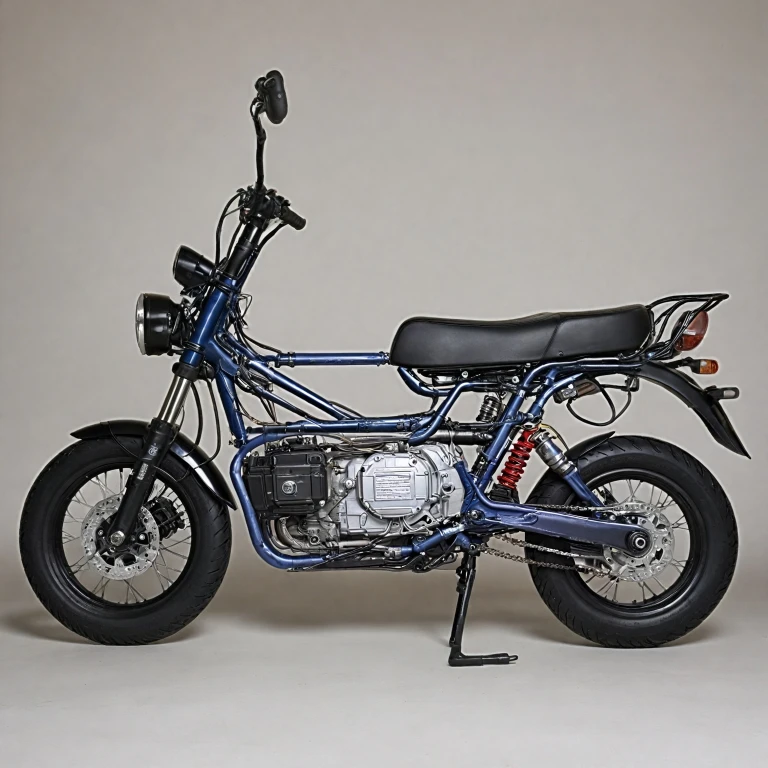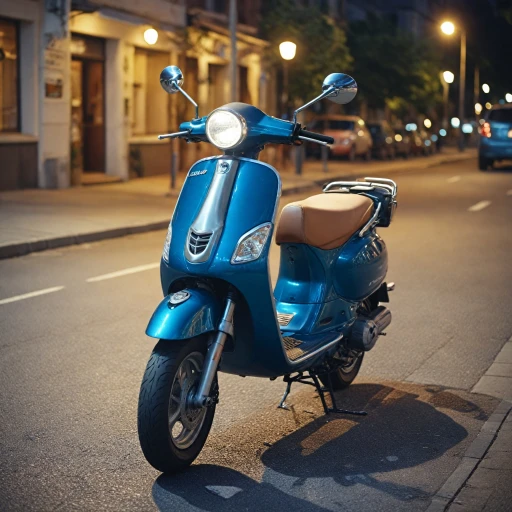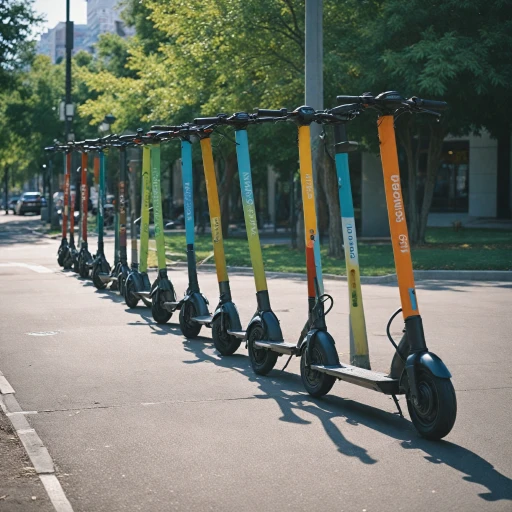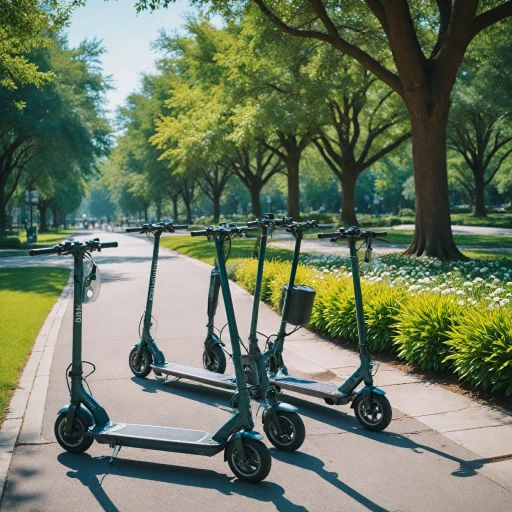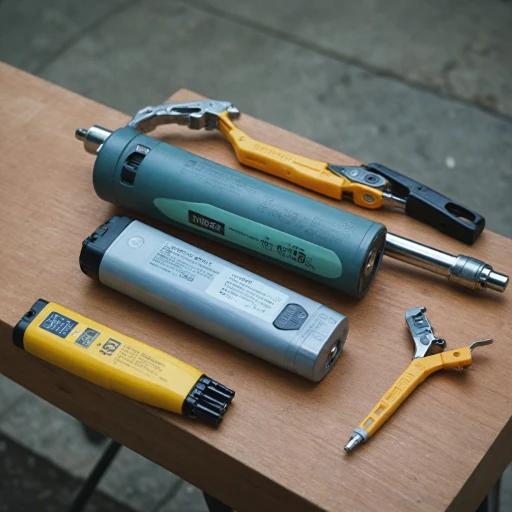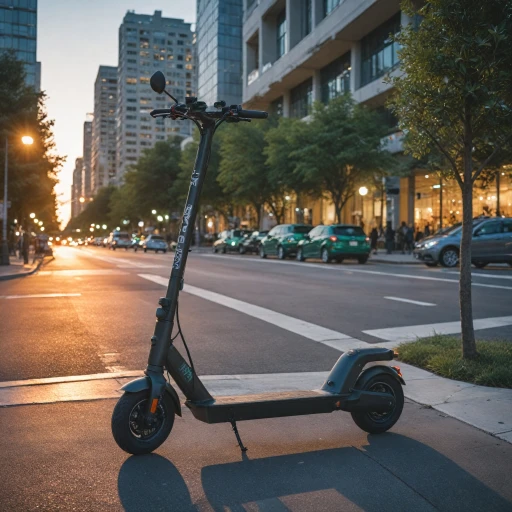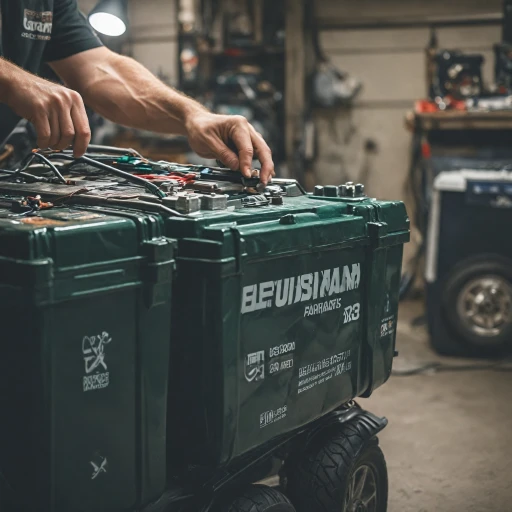Understanding the Basics of a 24V Battery System
Fundamentals of the 24V Battery System
When delving into the heart of electric scooters, understanding the 24V battery system is crucial as it directly influences your scooter's performance and range. This configuration, often composed of either lithium or lead acid batteries, is predominantly found in most electric scooters and golf carts, offering a balance between power output and sustainability.
In its simplest form, a 24V system is constructed by connecting two 12V batteries in series. This series connection increases the total voltage while maintaining the same capacity (amp-hours) as a single battery. Subsequently, a 24V battery pack becomes exceptionally efficient for driving the scooter's motor and providing the necessary power without adding much weight.
Proper management of positive and negative terminals is essential to maintain your battery wiring system's integrity. It's also important to ensure the connections between each terminal are secure, preventing potential short circuits or damage to the controller. Over time, regular inspection and maintenance of the battery connections can help sustain its optimal performance. Additionally, integrating a battery management system (BMS) can facilitate safety and efficiency, protecting against overcharging and discharging issues.
For those considering an upgrade or seeking to enhance their scooter's power, it's worthwhile to explore the benefits of eco-smart batteries. These advanced batteries represent a significant leap in technology, offering improved energy density, longer lifespan, and better environmental sustainability. For more insights on eco-smart batteries and why they might be a worthwhile investment for your scooter, explore
this in-depth guide.
Navigating through the intricacies of a 24V battery system requires attention to detail but can offer a rewarding experience with enhanced travel range and reliability on your ride.
Safety Precautions Before Wiring
Essential Safety Measures for Wiring a 24V System
Taking safety precautions is crucial to ensure a smooth and hazard-free wiring process for your electric scooter's battery system. Before diving into the wiring details like connecting the positive terminal to the terminal battery or handling negative terminals, let's understand the safety protocols to prevent accidents like short circuits or electrical shocks.
- Disconnecting Power Sources: Before handling the battery wiring, always disconnect the power sources. This means unplugging the charger and switching off the scooter’s power to avoid any electric shock.
- Use of Insulated Tools: Working with electricity necessitates the use of insulated tools. Using such tools will protect you from accidental contact with positive negative terminals.
- Personal Protective Equipment (PPE): Wearing protective gear like safety gloves and goggles is vital when handling battery packs, especially with lead acid or lithium batteries. This will protect your hands and eyes in case of accidental sparks.
- Ventilation: Always work in a well-ventilated area. Charging or wiring a battery can sometimes release gases. Proper ventilation dispels these, reducing health risks.
- Check Voltage Compatibility: Ensure that the voltage of the scooter's components aligns well with the battery’s output to prevent overloading the motor or the BMS (Battery Management System).
- Verify Connections: Double-check all the wire connections and ensure they're secure before powering the battery system. Make sure that no wire is touching the scooter's metal frame to avoid grounding issues.
For an enhanced understanding of the wiring process involving removable batteries, consider diving into this resource on
removable battery benefits.
Adhering to these safety precautions illuminates the path toward an efficient wiring process, reducing risks and enhancing the reliability of your scooter's battery system.
Essential Gadgets for a Data-Efficient Wiring Setup
To wire a 24V battery system for your electric scooter effectively, there are several tools you will require. Having the right tools not only makes the process safer but also ensures that the wiring is executed with precision, preventing mishaps that could damage the battery or other components.
- Multimeter: This device is indispensable for measuring voltage, current, and resistance. It helps check battery voltage, ensuring that your connections are correct and securing the longevity of your battery pack.
- Wire Strippers: You'll need quality wire strippers to remove the insulation from the ends of wires, allowing for clean metal-to-metal connections. Proper stripping prevents short circuits and ensures stable connections at both the positive terminal and negative terminals.
- Screwdrivers: Both flathead and Phillips screwdrivers are necessary for handling various types of terminal screws on the scooter's battery controller and other electrical systems. Secure and firm connections are crucial for stable power flow.
- Wrench Set: A set of wrenches will aid in tightening or loosening bolts and screws on the battery casing and motor connections. Always ensure a snug fit to avert any disconnections while riding.
- Heat Shrink Tubing: Use heat shrink tubing to insulate your wire connections. It provides protection against moisture and minimizes the risk of corrosion or accidental shorts.
- Soldering Iron: For more permanent connections, a soldering iron is recommended to affix wires securely to terminals.
Having these tools on hand is crucial for effective battery wiring. As you gear up for the task, don't forget to maintain a clean workspace and ensure all connections are double-checked before you start. Adopting these practices will protect your electric scooters from unexpected electrical failures and enhance the safety and performance of your battery system. For detailed insights on optimizing the performance of your scooter with accessory upgrades, read more on
the importance of LED lights for electric scooters.
Step-by-Step Guide to Wiring the Battery
Wiring Your 24V Battery System Step by Step
Taking the leap into working with the electrics in your scooter is not just a matter of convenience but also a key to ensuring your ride operates smoothly. Wiring a 24V battery involves careful attention and precision. Here’s a step-by-step guide to get you through the process safely and efficiently.
Prepare the Battery and Connections
First, make sure that the entire battery system is properly positioned in your electric scooter. Pay attention to the arrangement of the batteries where the positive terminals and negative terminals are accessible for connections. You will be wiring batteries in series to achieve a 24V output.
Connecting the Batteries in Series
- Identify the Terminals: Begin by locating the positive terminal and negative terminal of each battery in your battery pack.
- Link Batteries: Use a wire to connect the positive terminal of the first battery to the negative terminal of the second battery. Repeat this step if you're wiring additional batteries in a series.
- Check Connections: Ensure that these connections are solid to avoid any interruptions in power supply.
Link to the Controller
Once the batteries are correctly connected in series, the next step involves wiring the battery pack to the electric scooter’s controller:
- Connect to the Controller: Take a wire and connect it from the positive terminal of the last battery in the series to the positive connection on your scooter's controller.
- Ground the System: Connect a wire from the negative terminal of the first battery in the series to your scooter's grounding point or directly to the negative terminal on the controller depending on your setup.
By completing these steps, your scooter should be equipped to deliver the right amount of power needed.
Double Check for Short Circuits
Before proceeding, carefully review all connections to ensure there are no potential short circuits, which could damage your batteries or scooter.
Secure and Seal Connections
Finally, use appropriate tools to secure every connection point. Consider sealing or insulating them to prevent exposure to elements that could cause corrosion or degradation over time.
With the battery wiring securely in place, your electric scooter should be ready for use. For troubleshooting or common issues, revisiting your wiring process can often help trace the source of problems.
Common Mistakes to Avoid
Frequent Pitfalls in Wiring Your Battery System
When wiring a 24V battery for your electric scooter, there are common mistakes that many newcomers make. Being aware of these can help you avoid potential mishaps with your battery system.
- Incorrect Terminal Connections: One of the most frequent errors involves mixing up the positive and negative terminals. Ensuring that your wires are correctly aligned to the positive terminal and negative terminal of your battery is critical. Reversing these connections can lead to short circuits and damage to your scooter’s motor or BMS (Battery Management System).
- Poor Wiring Practices: Utilize the right gauge wire to handle the voltage and current requirements of your electric scooter. Scooters require precise wiring practices to ensure power is efficiently and safely delivered from the battery to the controller and motor. Improper wire battery arrangements can lead to voltage drops or excessive heating.
- Neglecting Safety Precautions: Handling series or parallel battery connections without adhering to safety protocols can lead to hazardous situations. Always ensure connections are secure and wires are not frayed, which could cause sparks or short circuits.
- Ignoring Battery Specifications: Each type of battery, whether lead acid, lithium, or golf cart battery, has specific requirements for voltage and current capacity. Mismatching your battery with the scooter's specifications can cause inefficiency and reduce the battery’s life span.
- Inadequate Inspection of Connections: Once you have completed the wiring, it is essential to conduct a thorough inspection. Check all battery connections for any loose wires or wrong placements, ensuring your electric scooter functions as intended without any electrical mishaps.
By keeping these common mistakes in mind and double-checking your wiring, you can maintain the performance and safety of your scooter's battery system. Remember, performing regular maintenance checks will also help in sustaining your electric scooter's longevity and efficiency.
Maintaining Your 24V Battery System
Regular Inspection and Maintenance
To keep your 24V battery system in top condition, begin with regular inspections. Ensure that the battery terminals are free from corrosion. This can be achieved by checking the positive and negative terminals periodically. Clean any visible build-up to maintain a good connection and prevent short circuits.
Monitor Battery Voltage
Consistent monitoring of the battery's voltage can help prevent unexpected failures. Using a voltmeter, you can check that the voltage aligns with the optimal range recommended for your battery model. Pay attention to any discrepancies that might indicate a need for immediate action.
Charge Correctly
Always use the proper charger specific to your battery type. Lithium batteries, for instance, require different chargers compared to lead-acid ones. Avoid overcharging by ensuring the charger cuts off automatically once the battery reaches full capacity. This will prolong the lifespan of your batteries and keep your electric scooter running efficiently.
Check Connections and Wiring
Examine the wiring and connections regularly to ensure they're secure and intact. Loose wires or weak connections can lead to power inconsistencies and damage. Check wire terminals and the battery connections for any signs of wear or fraying, and repair any issues immediately.
Temperature and Storage
Store your electric scooter and the battery pack in a cool and dry environment, as extreme temperatures can significantly affect battery performance and longevity. Avoid exposing the battery system to freezing temperatures or excessive heat.
Utilize the Battery Management System (BMS)
A Battery Management System (BMS) is crucial in maintaining the health of your battery pack. It monitors and manages the charging and discharging process, mitigating risks like overcharging and excessive discharge which can harm the battery pack.
Remember, regular maintenance not only extends your battery system's life but also ensures your electric scooter remains reliable and safe to use. Consistency in this practice will prevent common mistakes and contribute to a smoother experience.
